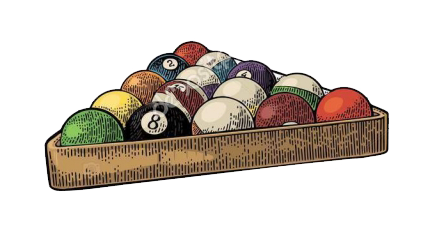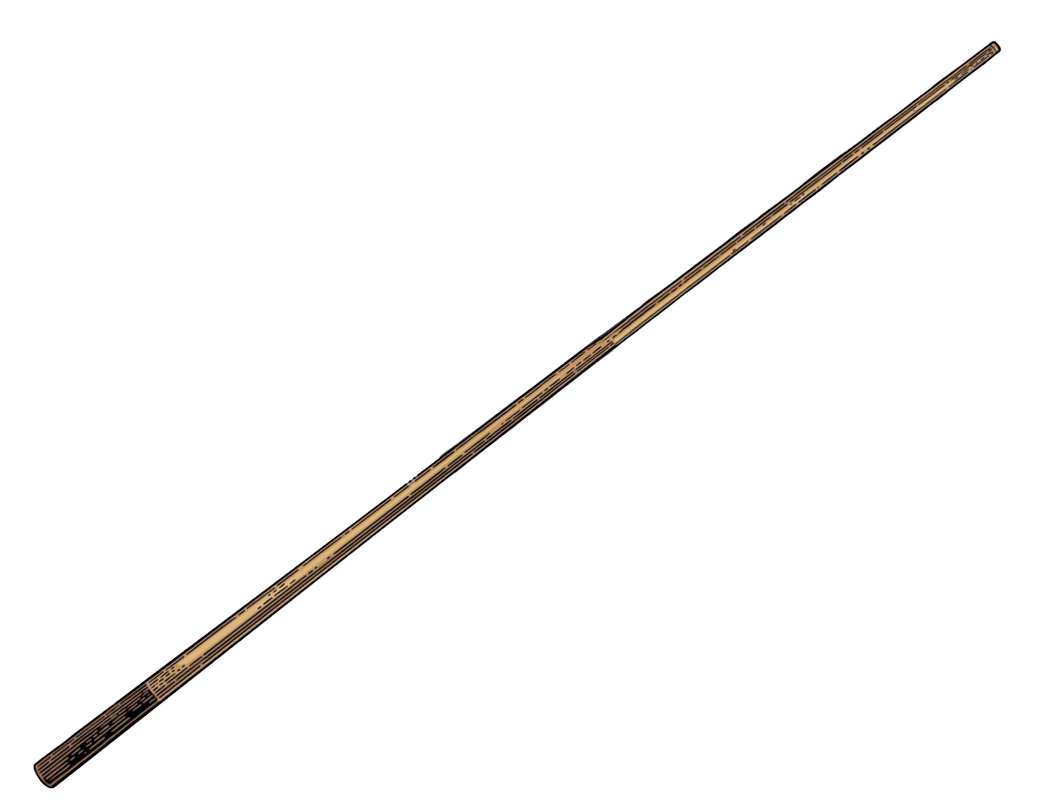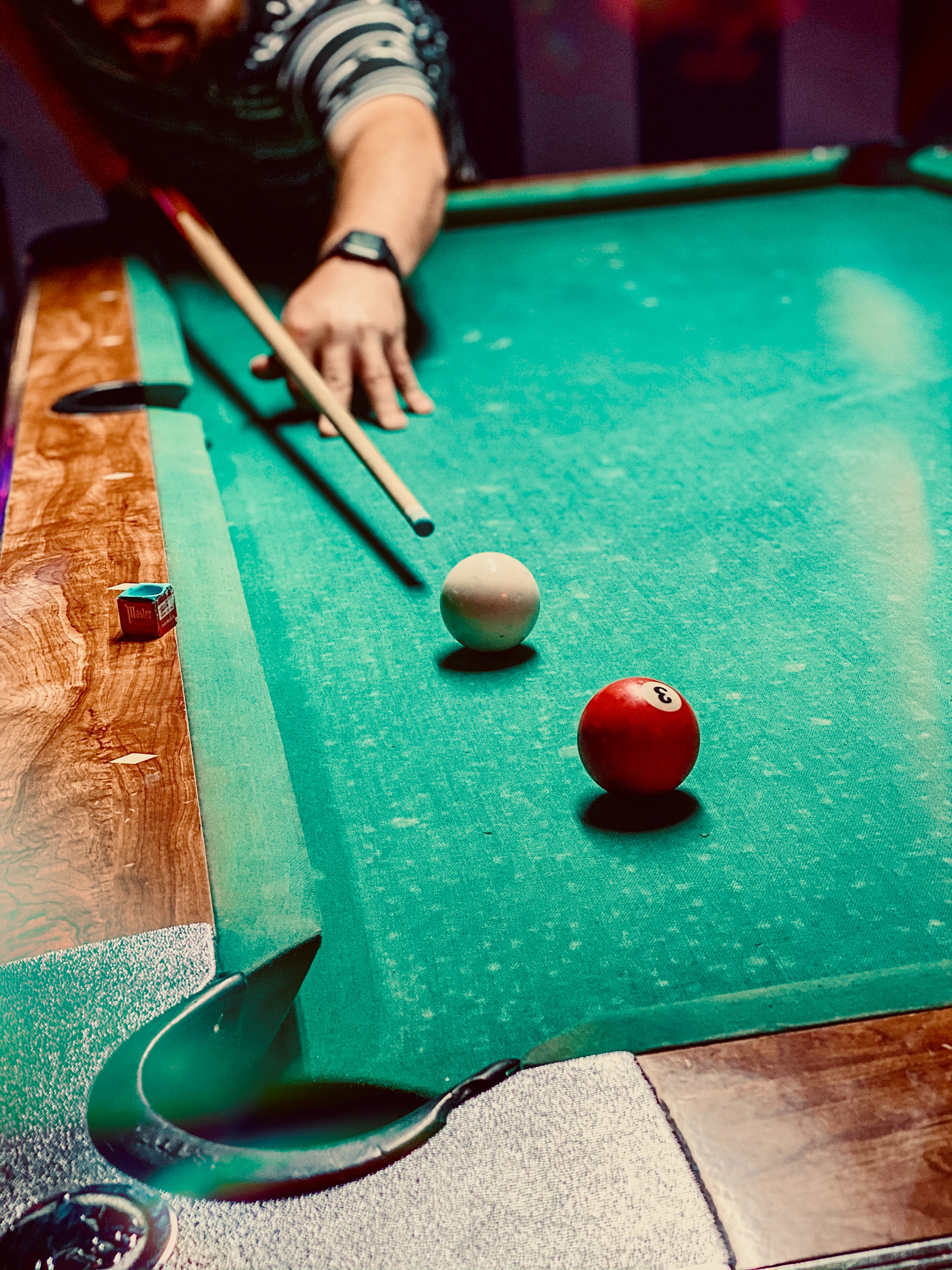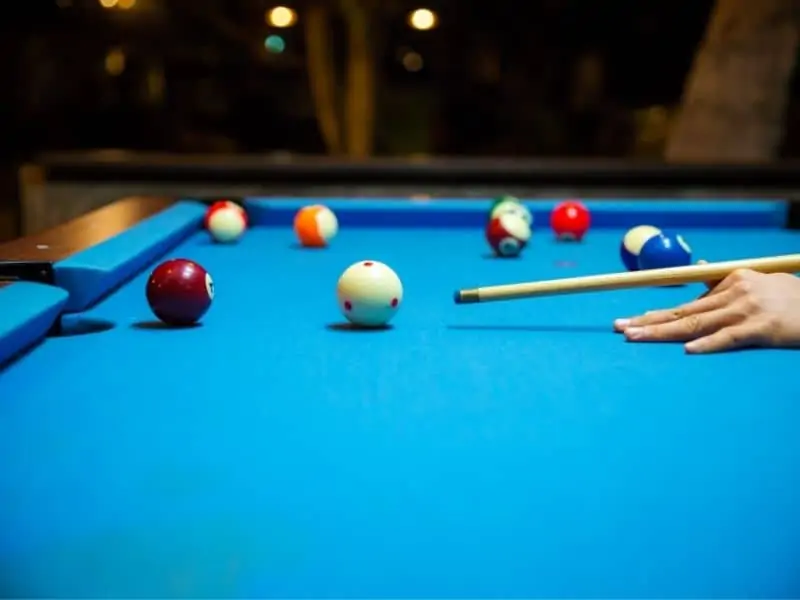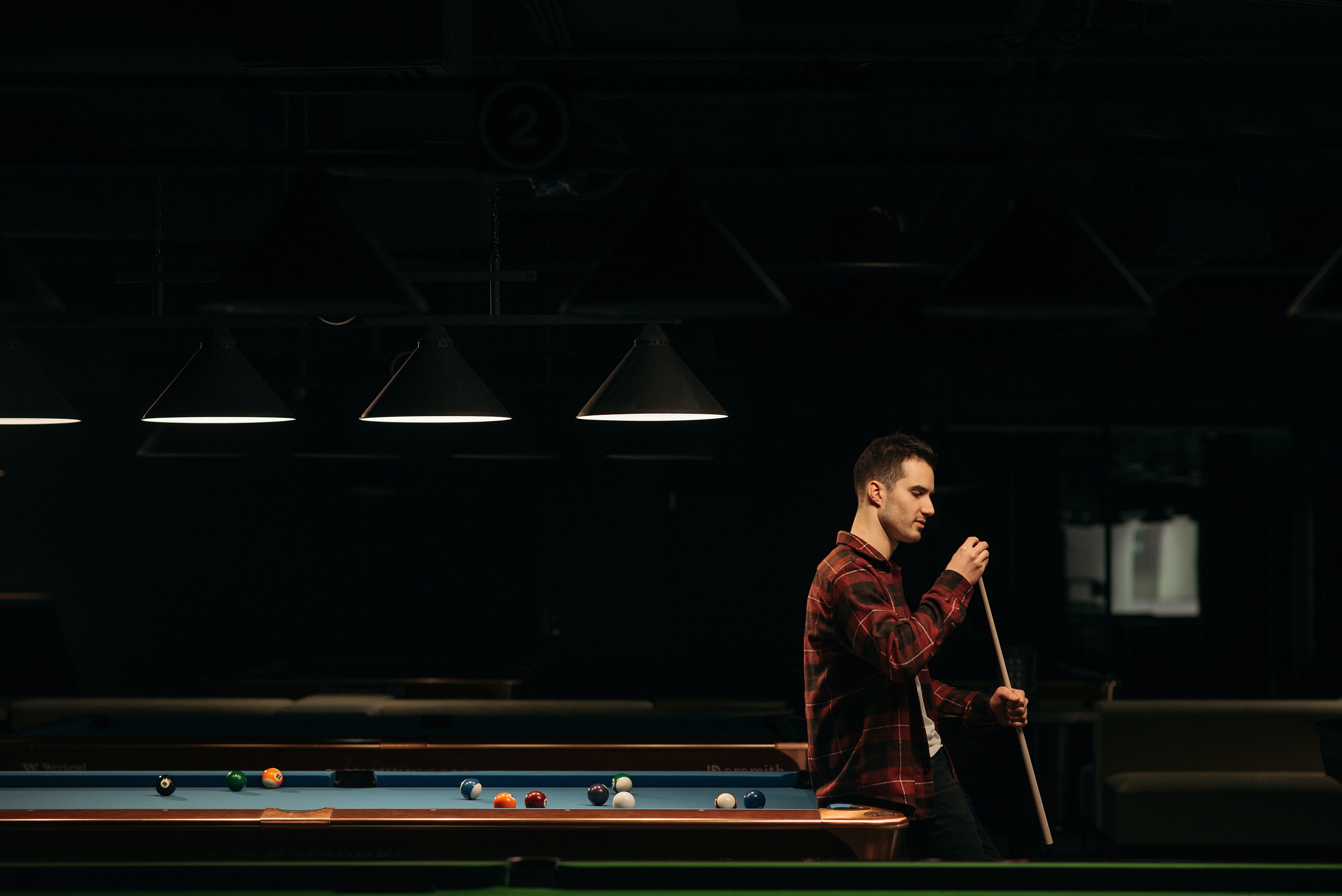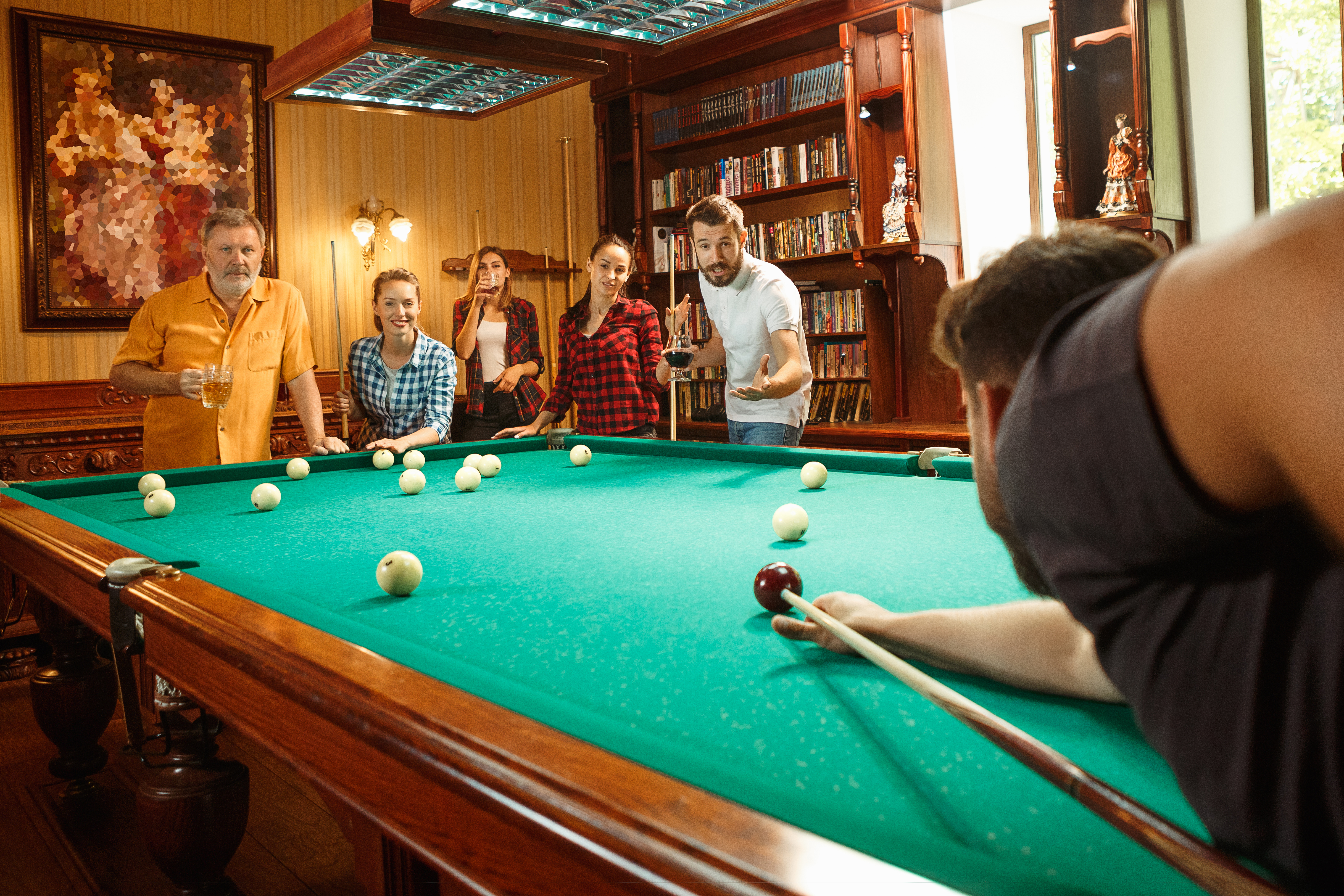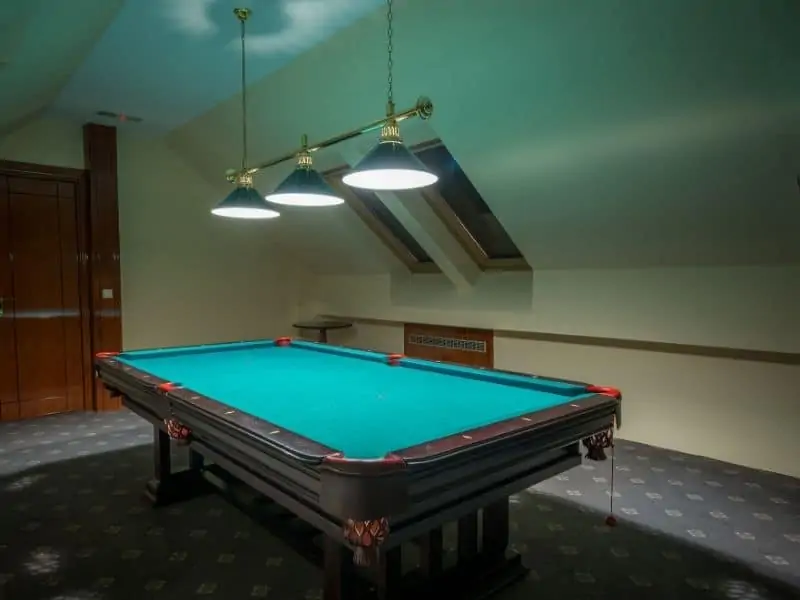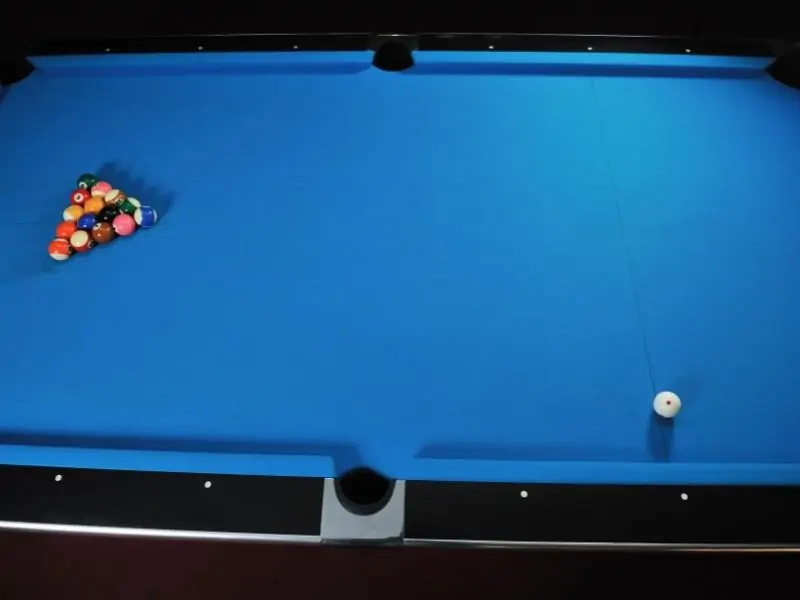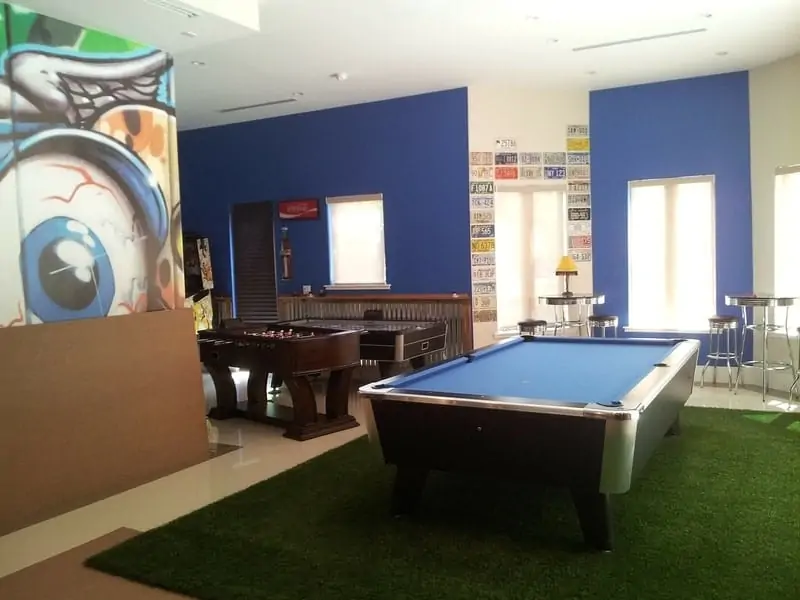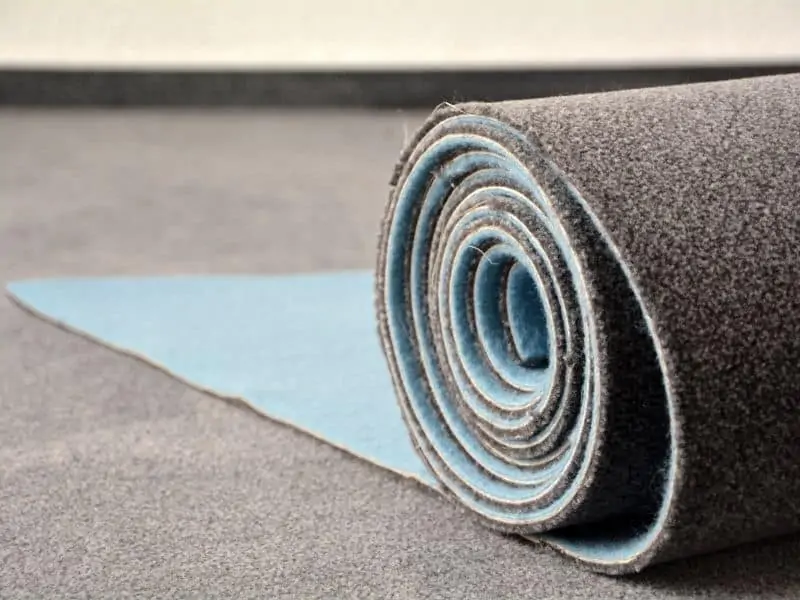If you’ve stepped into a billiards showroom or even done some online browsing for pool tables, you’ve probably noticed that there are an overwhelming number of felt colors to choose from. And whether you’re buying a pool table for the first time or you’re planning to have your old table refelted, picking the right color can be a little daunting. That’s why, with this article, I’ll answer the question, “what’s the best color for pool table felt?”
Green and blue are generally considered the best colors for pool table felt in most circumstances – but it’s ultimately a subjective matter. The decision largely depends on personal preference and whether the table is more for practice or decoration. However, more objective factors such as eye comfort and playability also make a difference.
At first glance, it may not seem like a big deal what color felt a pool table has. Certainly, for some people, it truly isn’t – but for others, it’s as important as any other aspect of the table. And since buying a pool table is no small decision and having a pool table refelted comes at no small cost, you don’t want to come to regret your choice of felt color. So let’s take a look at why felt color is so important.
Does Pool Table Felt Color Matter?
The color of a pool table’s felt matters for several reasons. The two most important reasons are eye comfort and playability – some colors are easier on the eyes than others and make the balls and pockets easier to see clearly. Felt color also affects the table’s cleanliness as well as the overall mood and aesthetic of the room it’s in.
Eye Comfort
When it comes to felt color, the key factor for most people is long-term eye comfort. There’s a reason green and blue are the most widely used and highly favored felt colors, particularly in billiards halls and tournaments – they’re easy to look at. Studies have shown that these gentle colors – the classic pool table green and Tournament Blue shades specifically – are very easy on the human eye.
On the other hand, more intense or bright colors like red and yellow have been known to strain and fatigue the eyes or even give people headaches. This is especially true in brightly lit rooms, as the felt will be reflecting light up into everyone’s eyes. Of course, not everyone will be bothered by this, and some people may not play long enough at one time for it to be an issue.
Playability
Felt color can also affect your game to some extent – namely, in terms of visibility. This is mostly an issue with dark colors like black, charcoal, burgundy, and navy blue. For one thing, the balls in the playfield will not stand out as starkly as they would on a brighter felt – especially the 8-ball. The last thing anyone wants is to blow the game-winning shotbecause the final ball was camouflaged!
Similarly, the shadows cast by the rails won’t be as clearly defined. In some cases, these soft shadows can “blend” with the darkness of the pockets, creating the illusion that a given pocket is larger than it is – a surefire recipe for missed shots.
All that being said, felt color may not necessarily have a direct impact on your game – again, it’s mostly subjective. Playing on a brightly colored table or a dark, shadowy table may bother some players enough to throw them off, but won’t make any difference to others.
Cleanliness
Another thing to consider when selecting a felt color is how well it will stay clean. Some colors tend to show dirt more quickly than others – ironically, black is one felt color that starts to look dirty very fast.
The color of your chalk makes a big difference in this regard. Getting chalk dust on the felt is unavoidable, but you can avoid using chalk that’s in contrast with your felt to keep it from getting dirty too fast. Pool table chalk comes in several colors, so you may even be able to use a matching color. Naturally, it also helps to clean your pool table often!
Mood
Many studies have also shown that certain colors tend to elicit certain moods or states of mind. This may be on a subtle or even subconscious level, but it’s still worth considering, especially if you have a grand vision of what spending time in your billiards room should be like.
Green and blue tend to be relaxing and soothing, brighter colors like red and orange tend to be more energetic, while darker colors and earth tones like maroon, grey, and tan make for a warm and tranquil atmosphere.
Aesthetics
Naturally, most people also want a pool table felt color that goes well with the table and the room it will be in. Of course, others couldn’t care less (or are putting their table in a color-neutral space).
But for those who do want their felt to match the color scheme and overall aesthetic of the surrounding space, it’s a good idea to compare color samples (physical swatches from a showroom, if possible) with the intended room.
What’s the Worst Color for Pool Table Felt?
In general, bright red, bright yellow, and solid black are considered the worst colors for pool table felt. Most people find that the bright, vibrant colors tend to strain their eyes, while the darkest colors make the balls and pockets harder to see. However, every player is different, so the worst felt color for some may be the best for others.
What are the Most Popular Pool Table Felt Colors?
Green and blue are by far the most popular felt colors used today – specifically, Tournament Green (aka Classic Green) and Tournament Blue (aka Electric Blue). You’ll rarely find any other color in pool halls or tournament settings. They are also highly popular for home use, although most people prefer darker or more exotic colors when the table is mostly decorative.
The classic green has been the reigning champ for many years – after all, it was the original pool table cloth color – but Tournament Blue has become more popular in recent years, especially in televised tournaments. This is because it tends to look better on video, provides a clear contrast with the balls, and is very easy on the eyes – even under the bright lights used to film a television broadcast.
But even outside the world of professional tournaments, many players prefer classic green or Tournament Blue because they don’t strain the eyes and provide great visibility in both bright or dim lighting.
However, for home use, when the table is more for decoration, the most popular colors tend to be grey, deep reds, and light browns.
How Do You Pick a Pool Table Felt Color?
Choosing the right color for your pool table felt is primarily a matter of preference. However, there are several factors to consider, the most important of which are what the table is intended for and how often you’ll use it. Other factors include the color and style of the table, the color scheme of the room, and the lighting.
Purpose & Intention
For serious players or those who intend to spend a lot of time playing for fun, green or blue are the best bets. Tan and camel, though not quite as good, are also gentle on the eyes and provide good contrast and visibility.
For casual players that only play a few times a week and don’t spend more than an hour or so at the table, eye comfort and fatigue likely won’t be much of an issue. However, it’s still best to stay away from very bright or very dark colors, as these can still strain the eyes or reduce visibility.
If the pool table is meant to be a decorative addition to your home that you only play the occasional game on, it won’t matter too much what color the cloth is, as long as it agrees with your aesthetic taste and goes nicely with the room and the colors of the table.
A Word On Lighting
The lighting in your rec room is going to have a significant impact on the look of your felt, no matter what color you choose. If you’re shopping for tables in a showroom, make sure you observe the lighting to see how it compares with your lighting scheme at home.
When shopping online, it’s a little more of a guessing game, so it’s a good idea to look through pictures of other people’s setups on Pinterest or Google Images to get a sense of how certain colors look in different spaces and lighting configurations.
In general, however, brighter colors do better with less light, darker colors need a little more to help visibility, and colors like green, blue, and tan tend to look good in just about any lighting.
Pool Table Felt Color Ideas
Whether your pool table is for decoration, recreation, or building your skills, you probably have a favored look or style you’re after. Here are a few ideas to give you some inspiration for your dream billiards room.
Classic: The classic look of an old-school pool hall is a favorite among many players. This is usually achieved with the traditional green felt, dark browns, brick reds, and warm lighting. Hardwood clawfoot or vintage coin-op style tables both work great for this look.
Tournament / Arcade: To emulate the feel of a pro tournament, you can use Electric Blue felt combined with shades of black, grey, and dark brown. This color scheme is also great for a more playful arcade-style feel, especially with silver highlights, bright lighting, and a coin-op style table.
Modern: For a sleek, stylish look, many opt for charcoal, light grey, or academy blue felt, which all go well with white, grey, black, and silver surroundings. Perfect for newer tables built to look like modern art pieces.
Rustic / Refined: Muted reds and soft, light browns can be used to create both the homey feel of a cabin setting and the luxurious aesthetic of an old-fashioned home billiards parlor. Maroon or burgundy go well with dark woods, while tan and camel are great for lighter wood shades.
The Psychological Impact of Pool Table Felt Colors
Delving deeper into the relationship between colors and the human psyche, one can recognize that felt color not only influences gameplay but also the mood and atmosphere of the room. In essence, colors influence our emotions and behaviors, even if we’re not consciously aware of these effects.
Emotional Resonance
Colors resonate with emotions. For instance, red, often linked with passion, excitement, and energy, might invigorate players, leading to a faster-paced game. Blue, on the other hand, is associated with calm, stability, and trust, potentially encouraging more calculated moves.
Cognitive Effects
Color choices can have cognitive implications as well. Bright colors like yellow stimulate mental activity and can make players more alert. On the contrary, darker shades might foster concentration and focus, as they reduce external stimuli.
Social Dynamics
If the pool table is set in a social environment, like a home recreation room or pub, the color can influence interpersonal dynamics. Warm colors like orange are considered sociable and optimistic, promoting lively conversations. Cooler colors might foster more in-depth, reflective dialogues.
Personal Identity and Expression
While this article has discussed popular choices and practical implications of pool table colors, one’s personal connection to a color shouldn’t be underestimated. For some, a specific hue might resonate with their identity or hold sentimental value. Perhaps it reminds them of their first game, an ancestral home, or even their favorite sports team.
Inclusivity and Accessibility
In more recent times, with a push towards inclusive design, one might also consider how color choices impact players with visual impairments. For those with color blindness, certain color contrasts might improve visibility, making the game more accessible.
Final Thoughts on the Psychological Angle
When choosing a pool table felt color, it might be worthwhile to reflect on the psychological implications. How do you want to feel when playing? What kind of ambiance do you wish to create for the room? By understanding the intricate relationship between color, mood, and cognition, you can tailor your choice to offer a richer gaming experience.
In Conclusion
There’s a pool table felt color for every player and every purpose –choosing the right oneis more about what you’re after than anything else. Green and blue may be considered the best overall, but if you can’t stand the sight of them, you’re better off going with what you like. In the end, the best color is the one you’re happy with long-term.
Other Articles You May Be Interested In:
Best Pool Cues for the Money: Discover the top pool cues that offer great value without breaking the bank.
Pool Table in the Garage? Here’s What You Need to Know: Understand the essential considerations for setting up a pool table in your garage.
Break Cue vs Playing Cue: What’s the Difference?: Learn the key differences between break cues and playing cues to enhance your game.
How Much Does a Good Pool Cue Cost?: Explore the factors that determine the cost of a high-quality pool cue.
Are Mini Pool Tables Worth It? A Complete Guide: Read our comprehensive guide on mini pool tables and decide if they’re the right fit for you.
